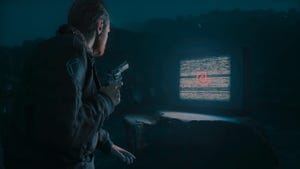A Better Classification System for RPGs
9 criteria that can be used to classify RPGs.

The labels JRPG and Western RPG are commonly used genre labels that don’t do a lot of good in actually telling anyone what the game in question is like because there is so much variety between games that are arguably in the same genre. For that matter, some people still can’t agree whether these terms should apply strictly to the location of the developer that made the game or to the style of game. Surely, we can do better.
Here are 9 criteria you can use to classify just about any RPG.
Combat System – Is it turn-based or Real-time? And for real-time games, there’s a further sub-classification – is it menu-based or does the player have direct control over their character?
Positioning – Is character & enemy position important or irrelevant in combat?
Party Size – How many characters does the player have in their active party?
Power Progression – Is the player’s party’s power progression linear or do they have more freedom to choose how their character’s develop in power & skill?
Story – Is the story predetermined or does the player have freedom to affect the story in major ways?
Focus – Does the game focus more on story or more on gameplay? This isn’t a reflection of the quality of either but rather how much time is spent on each comparatively.
Exploration – Is exploration linear (go here, then go here, then go here) or does the player have more freedom to explore the entire world?
Art Style – Is the art style realistic or more stylized?
Success – Is success in the game based more on the player’s skills (reflexes) or their character stats & strategies?
As you can see, most of these categories aren’t either/or situations. For example, in Final Fantasy IV, power progression is mostly linear (you have a set party at each story point and LV-Ups give increased stats & new abilities regardless of player choice) but the player has a small amount of control in how they choose to equip their characters (equipment is mostly linear progression too but occasionally it’ll give more interesting choices).
For fun, I decided to rate the stereotypical JRPG, Action/JRPG, and Strategy/JRPG in these various categories.
Traditional JRPG
Combat – Turn-based
Positioning – Irrelevant or minor (front & back row)
Party Size – 3-5
Power Progression – Mix
Story – Predetermined
Focus – Mix
Exploration – Linear at first, opens up later.
Art Style – Stylized
Success – Stat/Strategy-based
Traditional JRPG/Strategy
Combat – Turn-based
Positioning – Important
Party Size – 5 or more (sometimes WAY more)
Power Progression – Mix
Story – Predetermined
Focus – Gameplay
Exploration – Linear to non-existent
Art Style – Stylized
Success – Stat/Strategy-based
Traditional Action/JRPG
Combat – Real-time (Direct Control)
Positioning – Important
Party Size – 1 to 3
Power Progression – Mix
Story – Predetermined
Focus – Gameplay
Exploration – Linear
Art Style – Stylized
Success – Skill-based
And here are some analysis of many popular RPGs, both Western & Japanese. Oh and I included Bioshock as well even though some people don’t consider it a true RPG.
Persona 4 Golden
Combat – Turn-based
Positioning – Irrelevant
Party Size – 4
Power Progression – Mix
Story – Predetermined (But some freedom in the S-Link system)
Focus – Mix
Exploration – Linear
Art Style – Stylized
Success – Stat/Strategy-based
Final Fantasy XIII
Combat – Real-time (Menu-based)
Positioning – Moderate
Party Size – 3
Power Progression – Linear (becomes less linear late in the game)
Story – Predetermined
Focus – Mix
Exploration – Linear
Art Style – Stylized
Success – Stat/Strategy-based
Xenoblade Chronicles
Combat – Real-time (Menu)
Positioning – Important
Party Size – 3
Power Progression – Freedom
Story – Predetermined
Focus – Gameplay
Exploration – Freedom
Art Style – Stylized
Success – Mix
Dark Souls
Combat – Real-time (Direct)
Positioning – Important
Party Size – 1 (Can co-op with other players temporarily)
Power Progression – Freedom
Story – Predetermined
Focus – Gameplay
Exploration – Freedom
Art Style – Realistic
Success – Skill-based
Dragon Age: Origins
Combat – Mix (Real-time with pause to enter commands)
Positioning – Important
Party Size – 4
Power Progression – Freedom
Story – Changeable
Focus – Mix
Exploration – Freedom
Art Style – Realistic
Success – Stat/Strategy-based
Bioshock
Combat – Real-time (Direct)
Positioning – Important
Party Size – 1
Power Progression – Freedom
Story – Predetermined
Focus – Gameplay
Exploration – Non-linear
Art Style – Mix
Success – Skill-based
Borderlands
Combat – Real-time (Direct)
Positioning – Important
Party Size – 1 (Can co-op with other players)
Power Progression – Freedom
Story – Predetermined
Focus – Gameplay
Exploration – Freedom
Art Style – Stylized
Success – Mix
Read more about:
BlogsAbout the Author
You May Also Like









